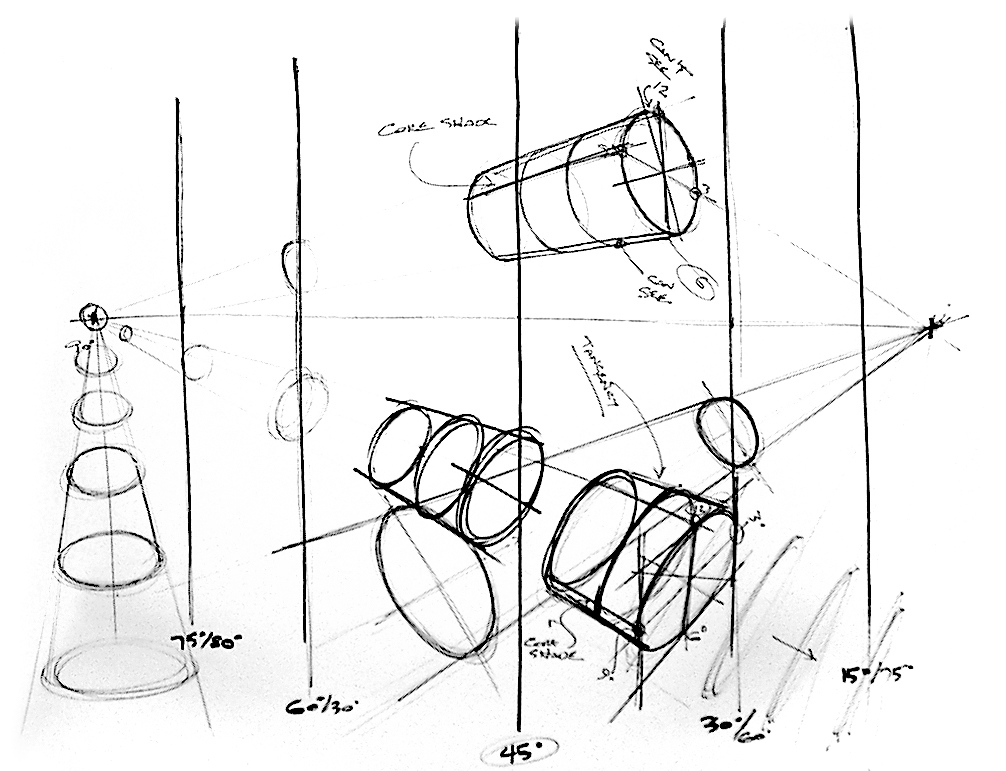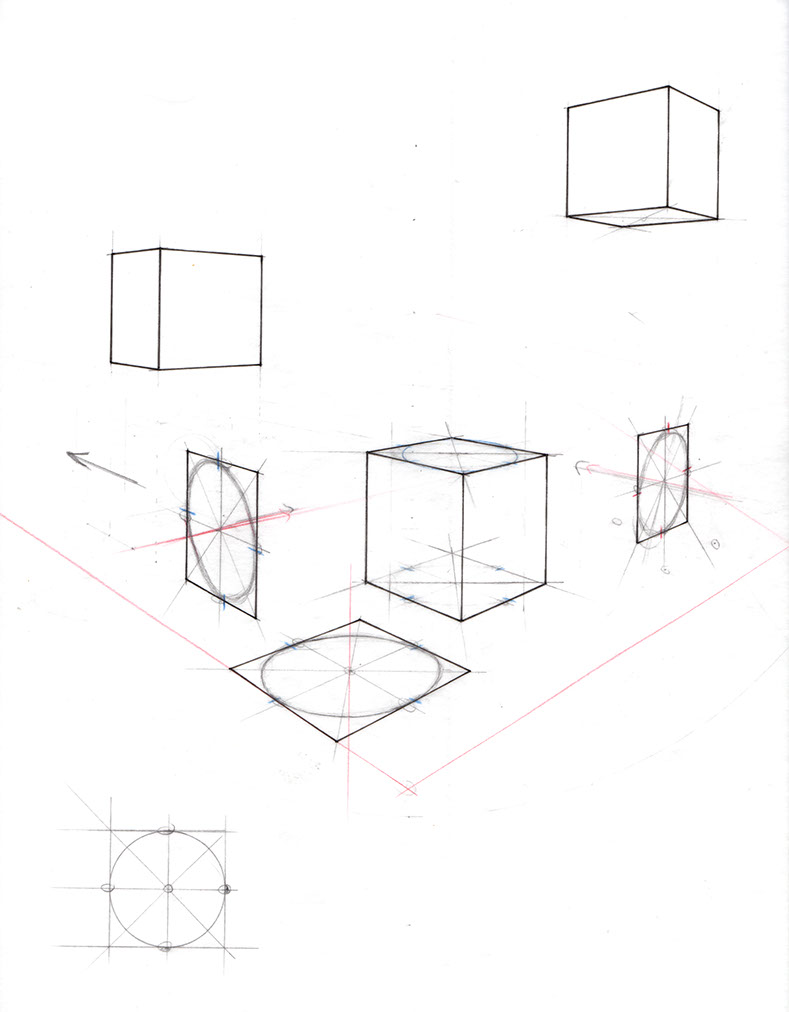
Well proportioned cubes are an absolute must as a circle in perspective will need to accurately fit into a square plane of the cube. You will need to be able to accurately locate the center axis and the four cardinal tangents where the circle will meet the square. Practice this for warming up, before moving on to cylinders.
Left. From basic geometry, we understand the four tangents of a circle as it will fit perfectly in a square.
MINOR AXIS of ellipse to opposite VP, on Vertical Plane Ellipses
MINOR AXIS of ellipse is VERTICAL on Horizontal Plane Ellipses
MINOR AXIS of ellipse to opposite VP, on Vertical Plane Ellipses
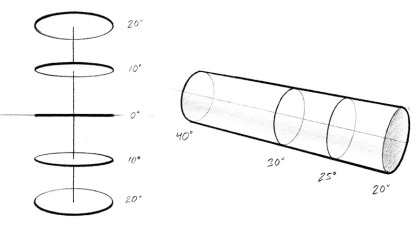
MINOR AXIS of ellipse is VERTICAL on Horizontal Plane Ellipses
MINOR AXIS of ellipse to opposite VP, on Vertical Plane Ellipses
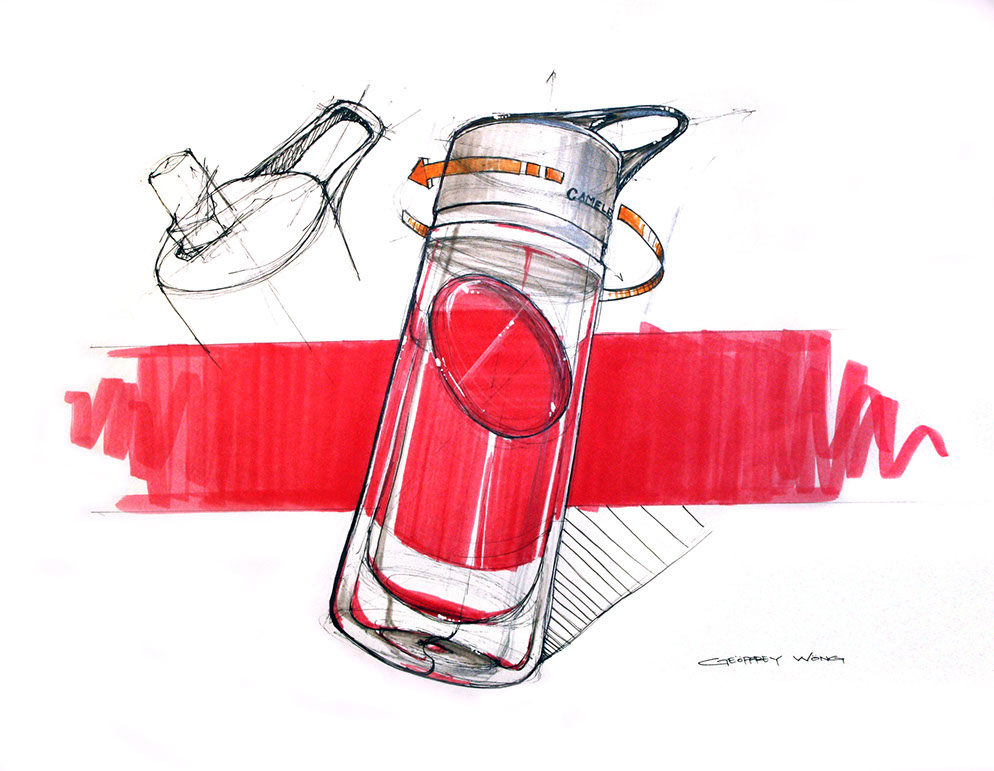
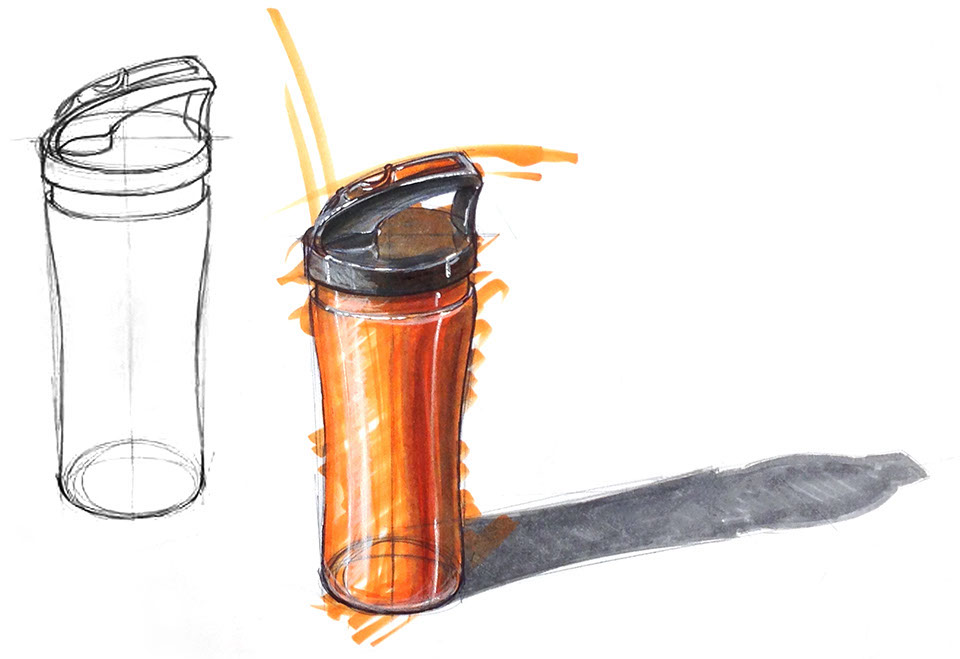
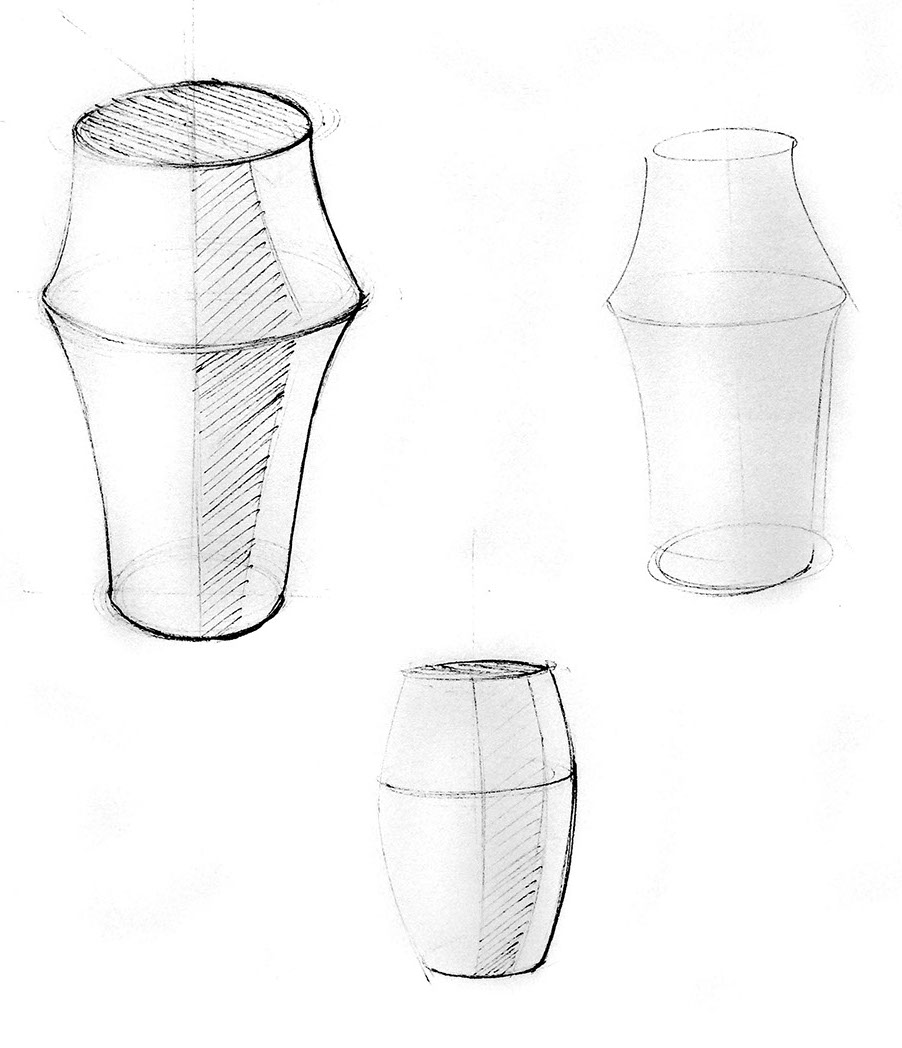
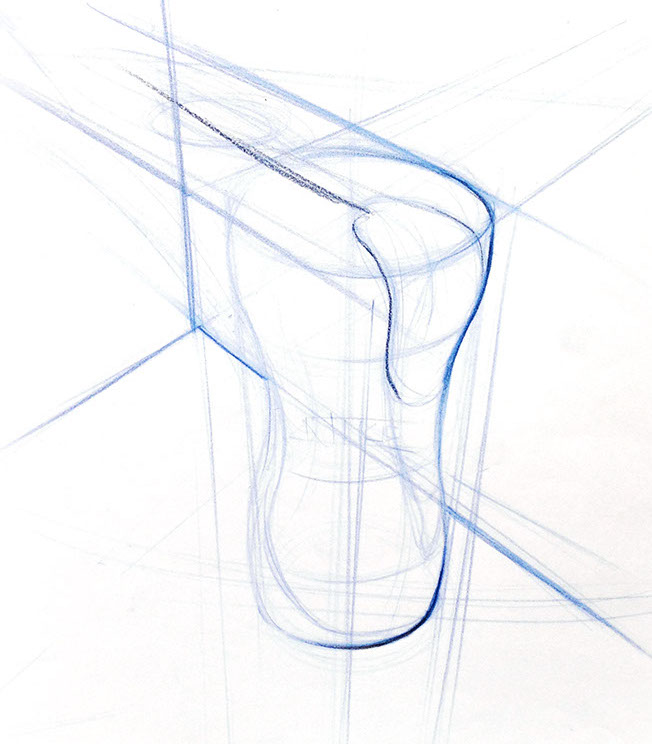
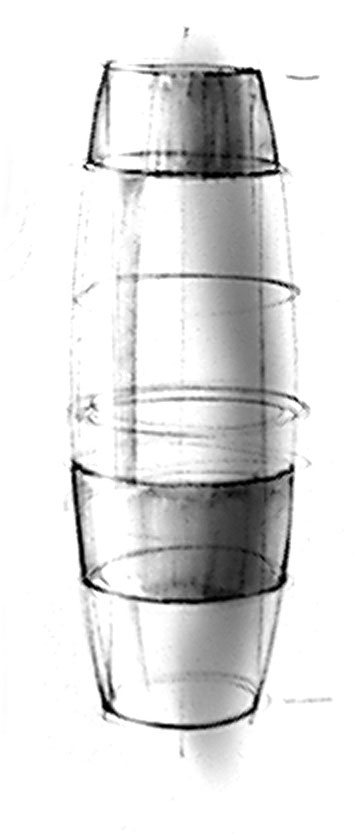
MINOR AXIS of ellipse is VERTICAL on Horizontal Plane Ellipses
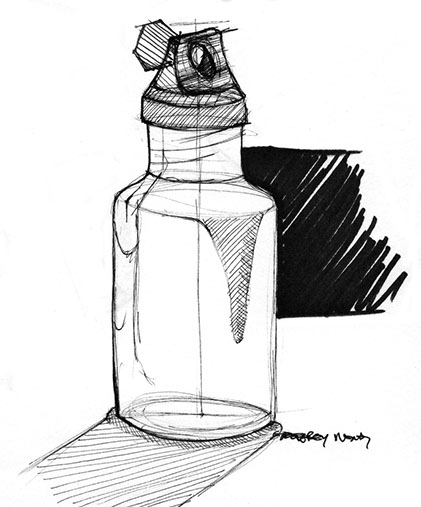

VERTICAL CYLINDERS / HORIZONTAL ELLIPSES
Vertical cylinders are the easiest to begin with. Once you have a good grasp of ellipses in the horizontal plane begin working on well constructed vertical and symmetrical cylinders. Once you have symmetry mastered, then move on to more complex variations such as transitional forms or skewed vases.
Vertical Cylinder marker rendering demo of a polished metal with rubber grip and lid.
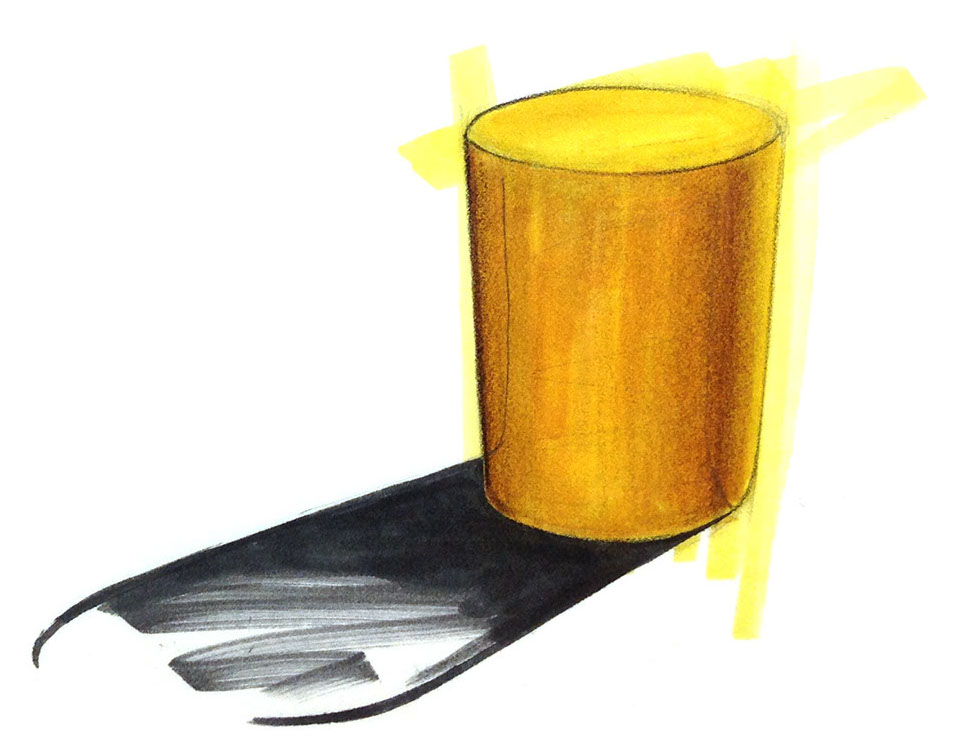
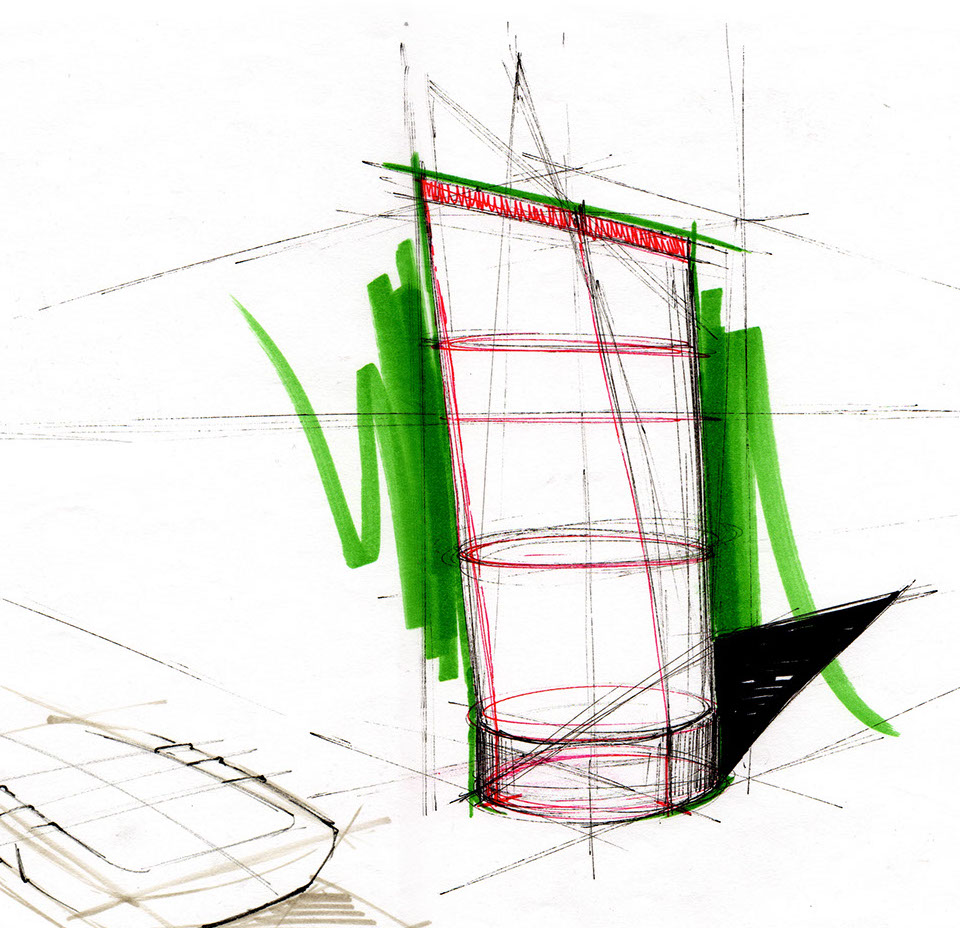
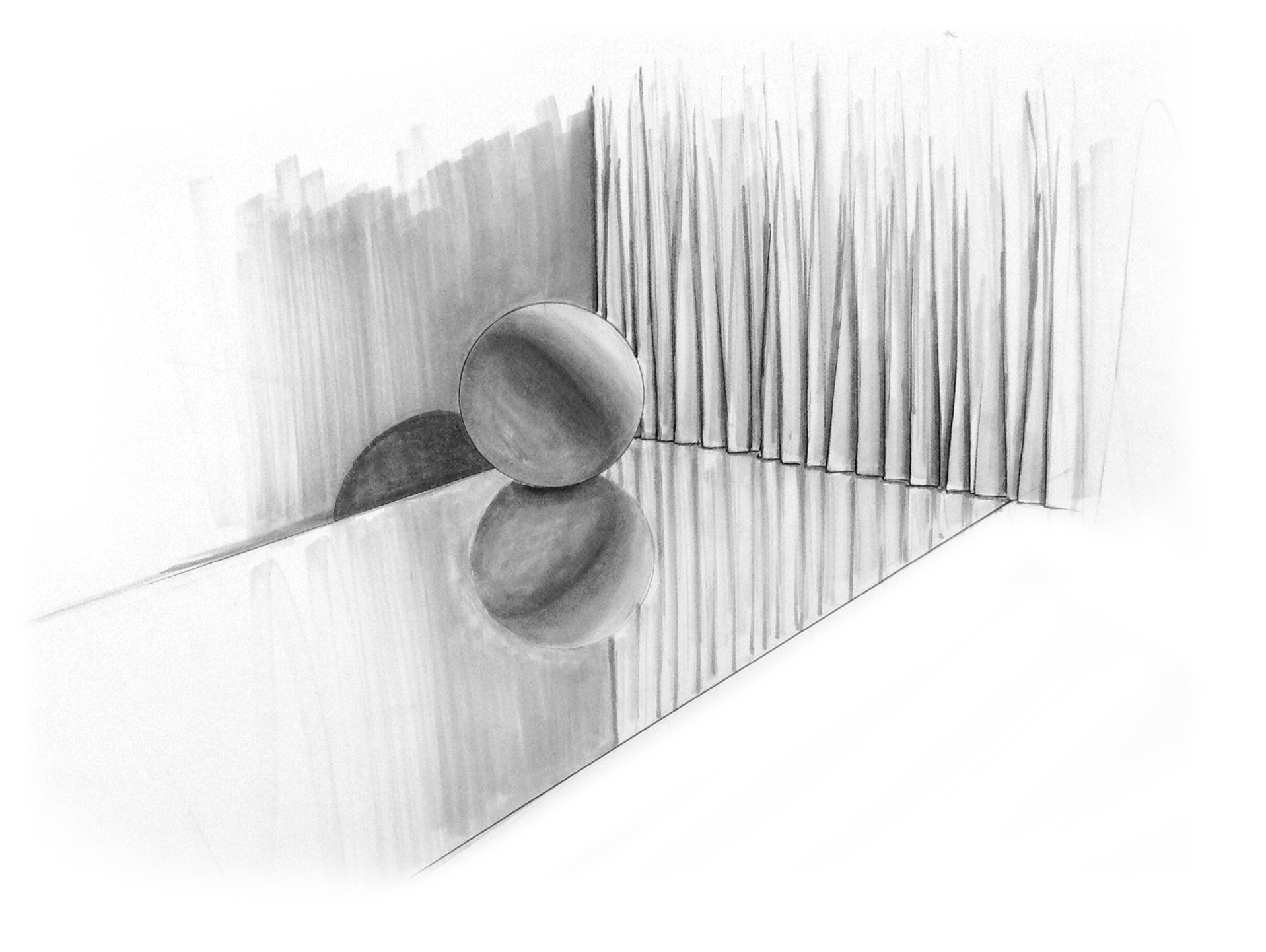
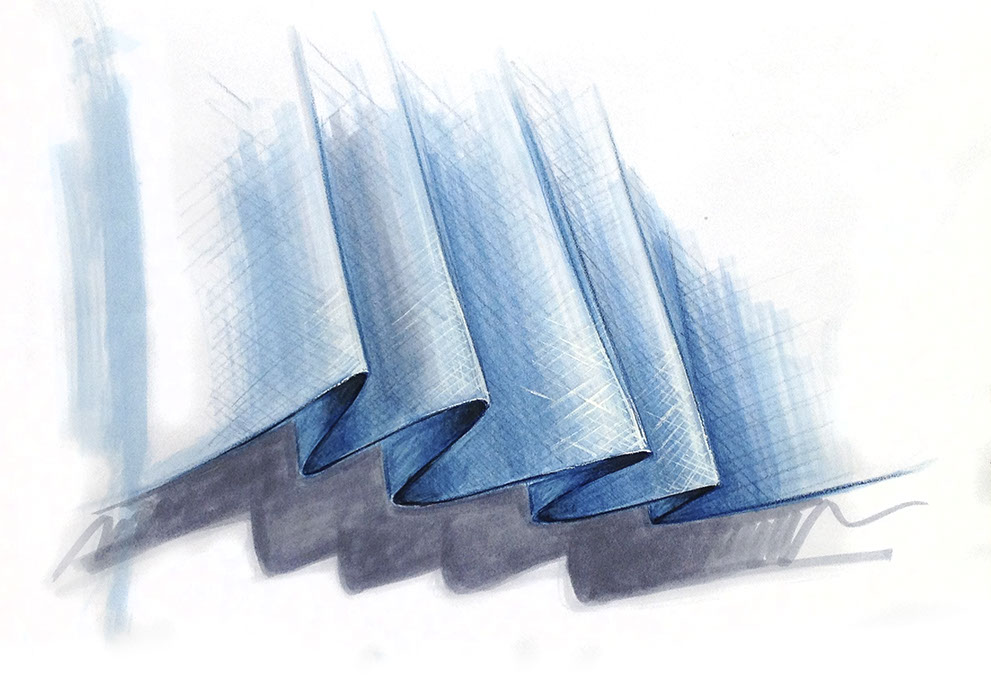
Curtains are simply cylinders. Allow there to be depth, darkness, and highlights along the rolls. Quick graphite strokes are an excellent way to render in and get the depth without much effort. If doing a close-up of the tapestry, as above, use simple cross-hatching with your color pencils, a deeper shade of your base hue, and white for highlights.
Reflections in Horizontal Plane Surfaces, such as counter tops and polished floors, even semi-gloss painted ceilings, just carry the tones vertically down (or up). Back off some on the saturation so the eye focuses on the room, and doesn't get overwhelmed by the mirror-like surfaces.
Transitional forms are shapes that progressively change across the form body. Be sure to follow the form logic when rendering core-shade.
HORIZONTAL CYLINDERS or VERTICAL ELLIPSES
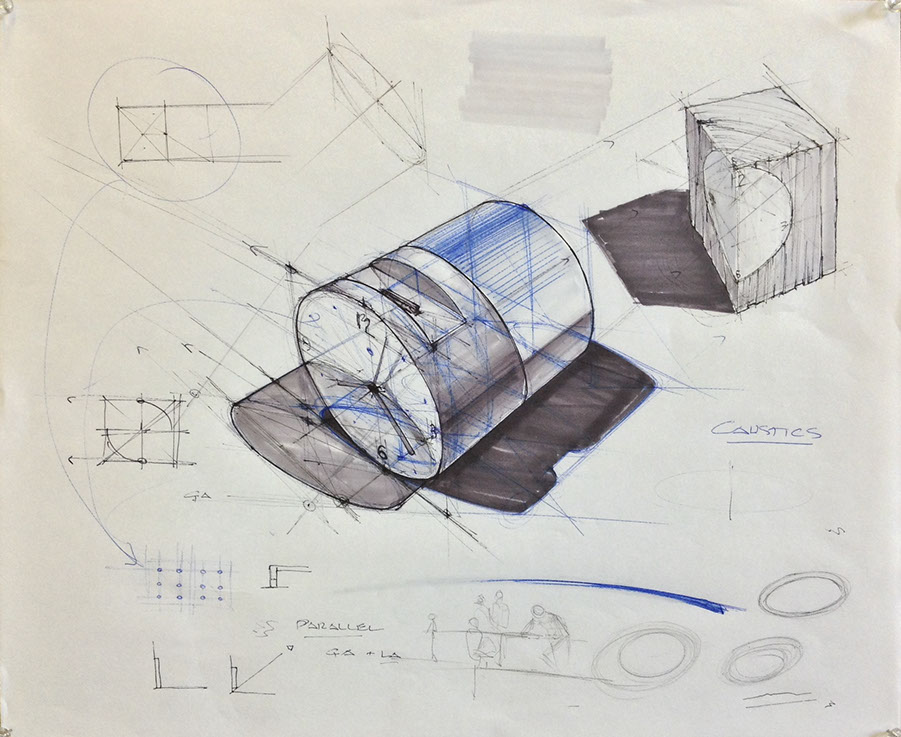
MINOR AXIS of ellipse to opposite VP, on Vertical Plane Ellipses
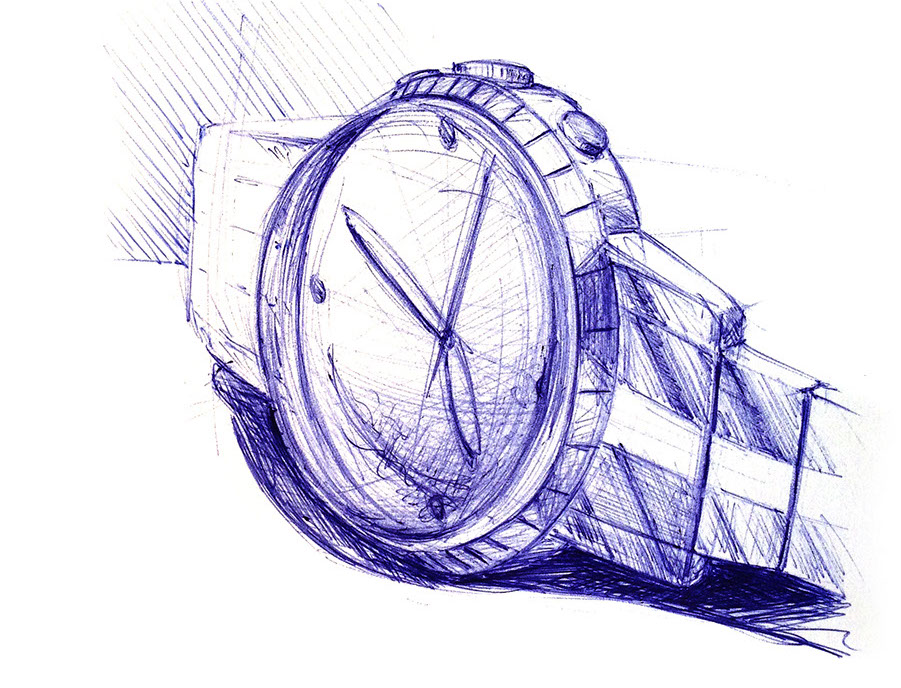
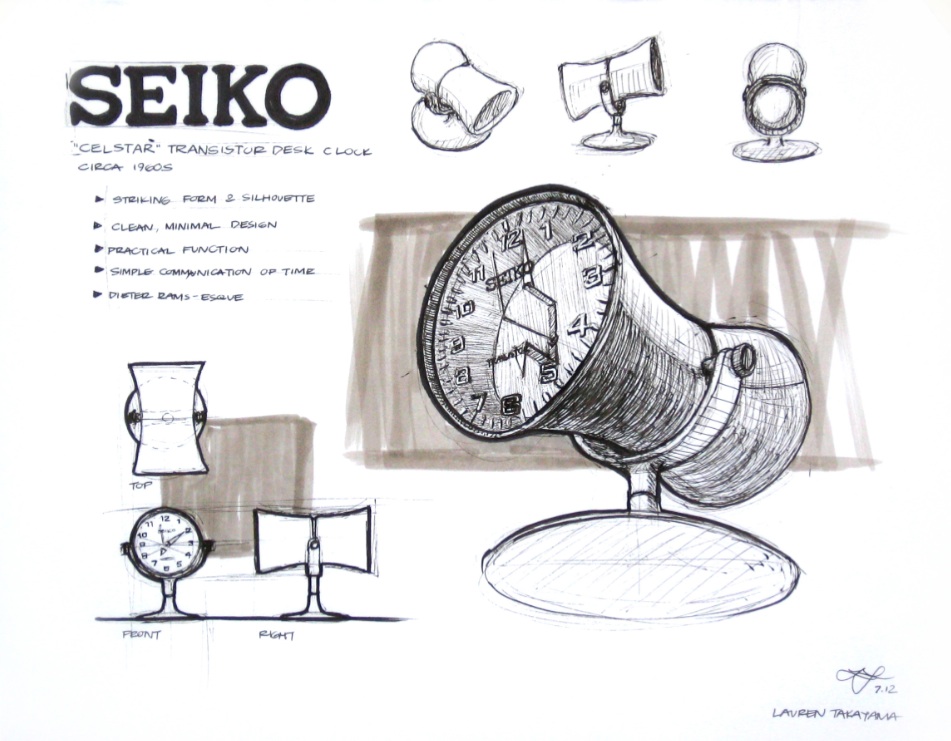
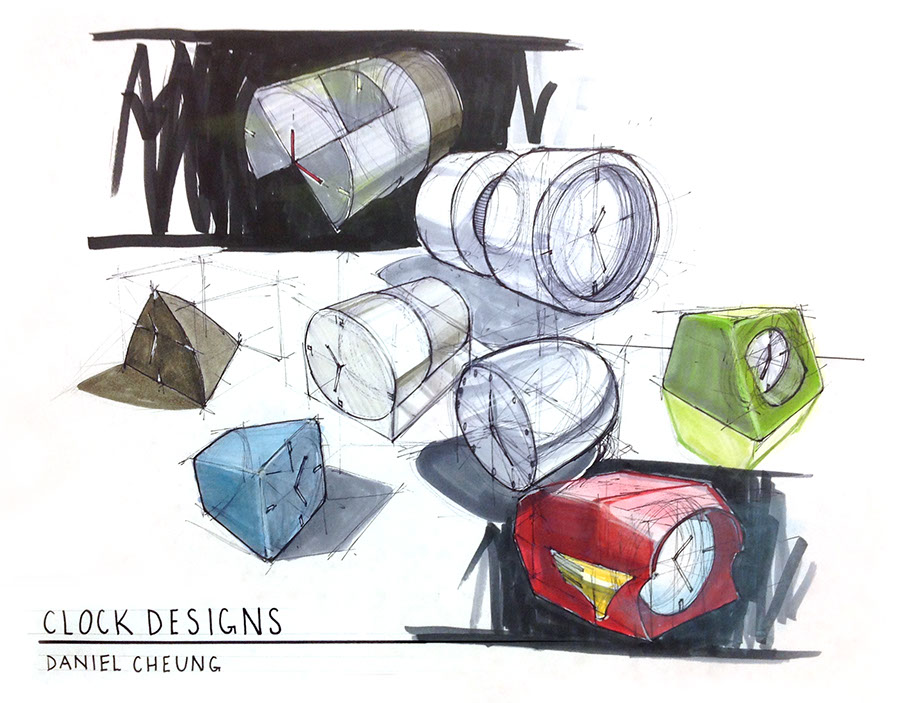
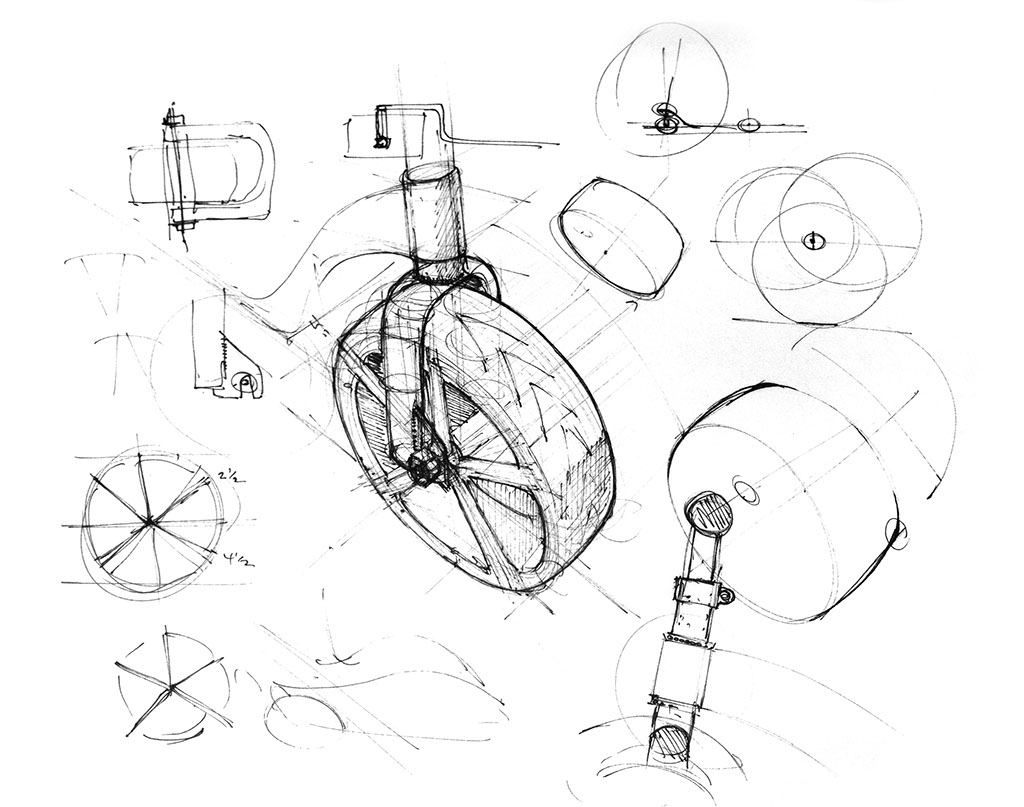

MINOR AXIS of ellipse to opposite VP, on Vertical Plane Ellipses
BENDING TUBES OR CURVILINEAR PERSPECTIVE
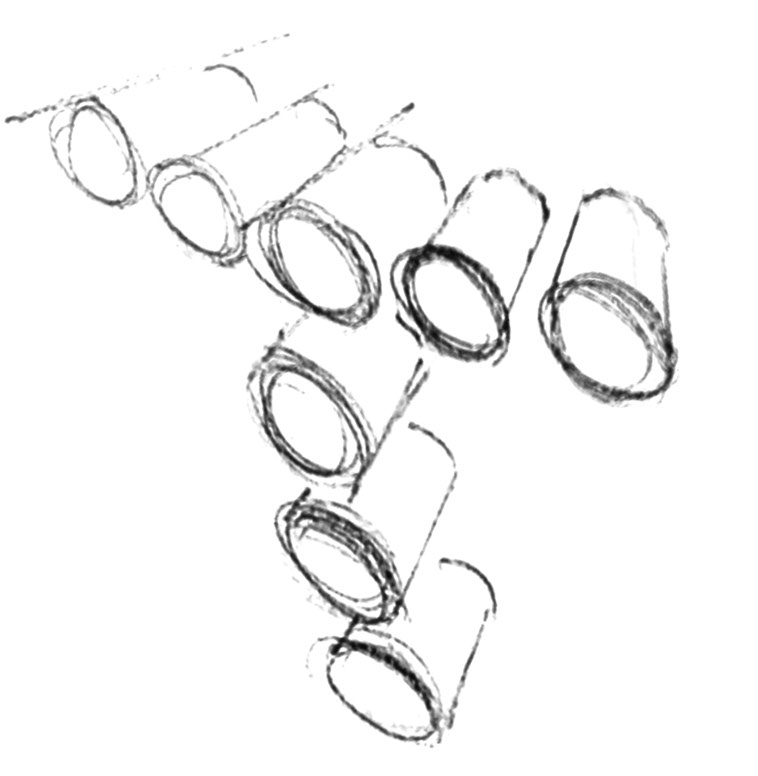
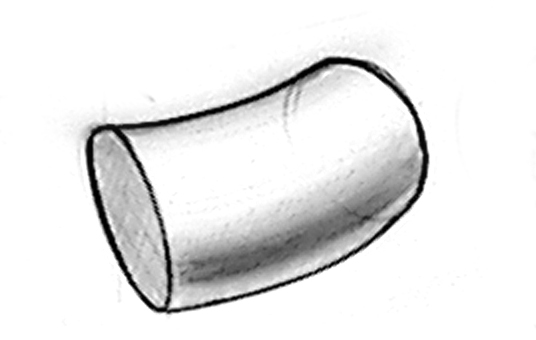
When bending tubes or using curvilinear perspective, align the minor axis of the ellipse to the centerline direction of the tube at that point of the tube body. This will change as you move along the tube. It's a little disorienting at first, but is essentially the same as the basic principle, so keep practicing and it'll get easier.
INTERSECTING VOLUMES - BOOLEAN OPERATIONS
Addition, Subtraction, and Intersections
* Estimate only. See instructor and calendar for specific due dates. Summer Session schedule is more compressed with one week equal to approximately two and half semester weeks.
CSULB | COTA | DEPARTMENT OF DESIGN | BIO

Questions, feedback, suggestions?
Email me with your recommendations.
©2020 Michael LaForte / Studio LaForte, All Rights Reserved. This site and all work shown here is purely for educational purposes only. Where ever possible student work has been used or original works by Michael LaForte.
Works by professionals found online or in publication are used as instructional aids in student understanding and growth and is credited everywhere possible.
